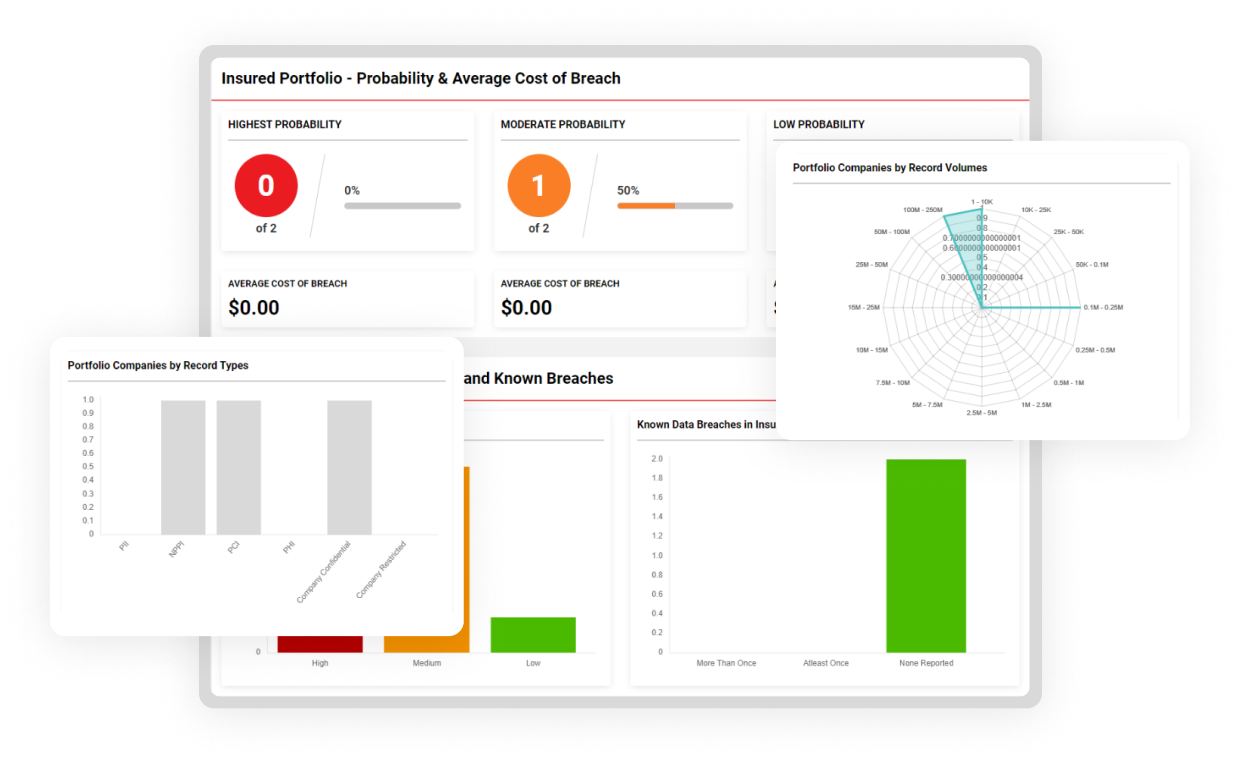
Vulnerability Assessment & Penetration Testing (VAPT)
Security and IT teams need a new approach to tackle cyber threats with a clear understanding of cybersecurity risk and automate workflows for rapid response. Through our partners, we help you Discover, Assess, Prioritize, and patch critical vulnerabilities and reduce cybersecurity risk in real time and across your global hybrid IT, OT, and IoT landscape.
We use Certified Ethical Hackers to identify your vulnerabilities and minimize your risk, protecting your organization against the most current threats.
Vulnerability Assessment
Penetration Testing
Web Application Security
ComplySec360 is feature rich and is the
one stop for compliance

Vulnerability Assessments
- As your Cybersecurity partner, we will perform regular perimeter scan to help you stay ahead of cyber criminals.
- Our regularly updated scan identifies external network vulnerabilities so you can keep your data safe. Vulnerability scanning identifies top risks such as misconfigured firewalls, malware hazards, remote access vulnerabilities, and can be used for cyber security or compliance mandates like SOC 2, ISO 27001, GDPR, PCI DSS and HIPAA.
- It is highly recommended that you perform external and internal vulnerability scans atleast quarterly and in some case more often depending on the criticality of your environment.

Penetration Testing
- Our team will help you understand critical vulnerabilities and offer advice on remediating or implementing security controls.
- Our Certified Ethical Hackers will then attempt to find and exploit your vulnerabilities by using industry-standard methodologies such as target profiling and enumeration, automated testing, service research, and application analysis.
- We will share your Pen Testing Report and discuss remediation plan.
- Once you have completed the remediation, our pen testing team will retest your system to check if remediation has been fully implemented.
- It is highlighted recommended that a penetration testing is conducted atleast once annually or anytime a major change happens to your environment.

Web Application Security
- Detect OWASP Top 10 risks such as SQL injection, cross-site scripting (XSS), cross-site request forgery (CSRF) and unvalidated redirection.
- API-based business-to-business connectors, with SOAP and REST API scanning capabilities.
- We will help you consolidate web app vulnerability data from manual penetration testing solutions and automated scans to get a complete view of your web app security posture
OUR APPROACH
Depending on the complexity of the environment, number of assets, applications a typical penetration testing which includes vulnerability scans will take anywhere between 3-6 weeks
Objective
In this phase, we will setup a conference call with your IT and security team to understand the objective for performing a VAPT.
This will help us document the scope of your pen test, your IT environment, threats and vulnerabilities you are most worried about etc.
Plan
In this phase, you will receive a questionnaire to provide us with the details in terms of assets to be scanned, external / internal IPs, application details, APIs.
Based on the above, we will submit a detailed plan along with dates for your pen testing.
Test
In this phase, we will actually attempt to find and exploit your vulnerabilities by using industry-standard methodologies such as target profiling and enumeration, automated testing, service research, and application analysis.
We will document the findings to present a detailed report.
Report
In this phase, we will setup a conference call with your IT and security team to review your threat report that includes all vulnerabilities detected and a narrative of the pen test findings
Re Test
In this phase, once your first remediation is completed, a retest will be scheduled checking for proper patching.
We also include re-testing.
Frequently Asked Questions
Remove Vulnerabilities from your environment and protect from cyber attacks.
No. Pen testing and vulnerability scanning are two very different ways to test your systems for vulnerabilities.
Penetration testing and vulnerability scanning are often confused for the same service. A vulnerability scan is an automated, high-level test that looks for and reports potential vulnerabilities. A penetration test is a detailed hands-on examination (intrusive) by a real person that tries to detect and exploit weaknesses in your system.
Penetration testing and vulnerability scanning are often confused for the same service. A vulnerability scan is an automated, high-level test that looks for and reports potential vulnerabilities. A penetration test is a detailed hands-on examination (intrusive) by a real person that tries to detect and exploit weaknesses in your system.
Vulnerability scans assess computers, systems, and networks for security weaknesses, also known as vulnerabilities. These scans are typically automated and give a beginning look at what could possibly be exploited. A good vulnerability scan can search for over 50,000 plus vulnerabilities and are required as per PCI DSS, FFIEC, and other regulations.
Vulnerability scans can be performed manually or run on a scheduled basis. It will complete in as little as few minutes to as long as several hours depending on the assets being scanned. Vulnerability scans don’t go beyond reporting on vulnerabilities that are detected.
Vulnerability scans can be performed manually or run on a scheduled basis. It will complete in as little as few minutes to as long as several hours depending on the assets being scanned. Vulnerability scans don’t go beyond reporting on vulnerabilities that are detected.
A penetration test simulates a hacker attempting exploit vulnerabilities to get into a business system.
An certified pen tester, often called ethical hackers, search for vulnerabilities and then try to prove that they can be exploited. Using methods like password cracking, buffer overflow, and SQL injection, they attempt to compromise and extract data from a network in a non damaging way.
An certified pen tester, often called ethical hackers, search for vulnerabilities and then try to prove that they can be exploited. Using methods like password cracking, buffer overflow, and SQL injection, they attempt to compromise and extract data from a network in a non damaging way.
It really depends on the complexity of your environment and your objectives. Please see the ‘Our Approach’ section above to understand more on the steps.






